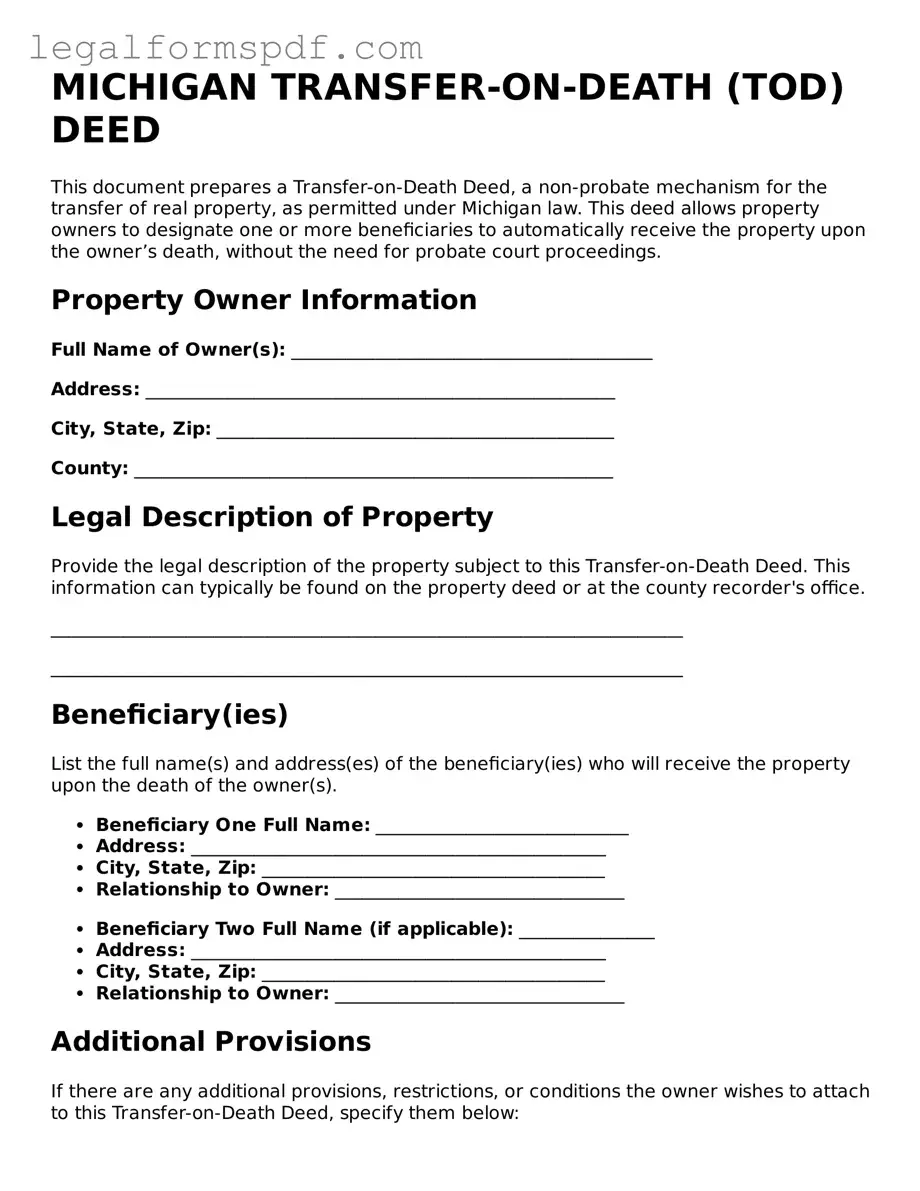MICHIGAN TRANSFER-ON-DEATH (TOD) DEED
This document prepares a Transfer-on-Death Deed, a non-probate mechanism for the transfer of real property, as permitted under Michigan law. This deed allows property owners to designate one or more beneficiaries to automatically receive the property upon the owner’s death, without the need for probate court proceedings.
Property Owner Information
Full Name of Owner(s): ________________________________________
Address: ____________________________________________________
City, State, Zip: ____________________________________________
County: _____________________________________________________
Legal Description of Property
Provide the legal description of the property subject to this Transfer-on-Death Deed. This information can typically be found on the property deed or at the county recorder's office.
______________________________________________________________________
______________________________________________________________________
Beneficiary(ies)
List the full name(s) and address(es) of the beneficiary(ies) who will receive the property upon the death of the owner(s).
- Beneficiary One Full Name: ____________________________
- Address: ______________________________________________
- City, State, Zip: ______________________________________
- Relationship to Owner: ________________________________
- Beneficiary Two Full Name (if applicable): _______________
- Address: ______________________________________________
- City, State, Zip: ______________________________________
- Relationship to Owner: ________________________________
Additional Provisions
If there are any additional provisions, restrictions, or conditions the owner wishes to attach to this Transfer-on-Death Deed, specify them below:
______________________________________________________________________
______________________________________________________________________
Execution
This Transfer-on-Death Deed must be signed by the property owner(s) and notarized to be effective. The deed does not need to be delivered to the beneficiary during the owner’s lifetime but must be recorded in the county where the property is located before the owner's death.
Owner(s) Signature: __________________________________________
Date: ________________________________________________________
State of Michigan
County of _________________________
This document was acknowledged before me on (date) ____________________ by (name of owner) ________________________________________.
Notary Public: ______________________________________________
My commission expires: ____________________________________________
Disclaimer
This template is provided as a general guide to prepare a Michigan Transfer-on-Death Deed and may not suit every individual situation. Property owners are encouraged to consult with a qualified attorney to ensure that this deed meets their specific needs and complies with Michigan law.
